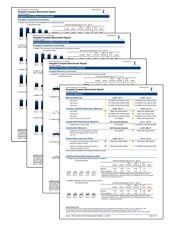

To provide good control and correctly calibrated rates, we propose direct standardization instead. We find that indirect standardization, as currently used by Hospital Compare, fails to adequately control for differences in patient risk factors and systematically underestimates mortality rates at the low volume hospitals. For the ultimate purpose of comparisons, hospital mortality rates must be standardized to adjust for patient mix variation across hospitals. To make appropriately calibrated predictions, our revised models incorporate information about hospital volume, nursing staff, medical residents, and the hospital’s ability to perform cardiovascular procedures. This process of calibrating individualized predictions against general empirical advice leads to substantial revisions in the Hospital Compare model for AMI mortality. Here, we calibrate these Bayesian recommendation systems by checking, out of sample, whether their predictions aggregate to give correct general advice derived from another sample. Before individualized Bayesian recommendations, people derived general advice from empirical studies of many hospitals, for example, prefer hospitals of Type 1 to Type 2 because the risk is lower at Type 1 hospitals. More information about Hospital Care Compare can be found by visiting the CMS.gov website and performing a search for Hospital Compare. The Overall Hospital Rating measure and its star. Hospital Care Compare is part of an Administration-wide effort to increase the availability and accessibility of information on quality, utilization, and costs for effective, informed decision-making. Except for the largest hospitals, these individual recommendations or predictions are not checkable against data, because data from smaller hospitals are too limited to provide a meaningful check. The HCAHPS Summary Star Rating combines all information about specific aspects of patient experience of care. Hospital Compare’s current recommendations are based on a random-effects logit model with a random hospital indicator and patient risk factors. Cal Hospital Compare, formerly known as the California Hospital Assessment Task Force (CHART) prior to 2016, was.

In particular, Medicare’s Hospital Compare webpage provides information to patients about specific hospital mortality rates for a heart attack or acute myocardial infarction (AMI). Cal Hospital Compare is a performance reporting initiative managed by a multi-stakeholder Board of Directors, with representatives from hospitals, purchasers, health plans, and consumer groups for details see the Our Team page. Bayesian models are increasingly fit to large administrative datasets and then used to make individualized recommendations.


 0 kommentar(er)
0 kommentar(er)
